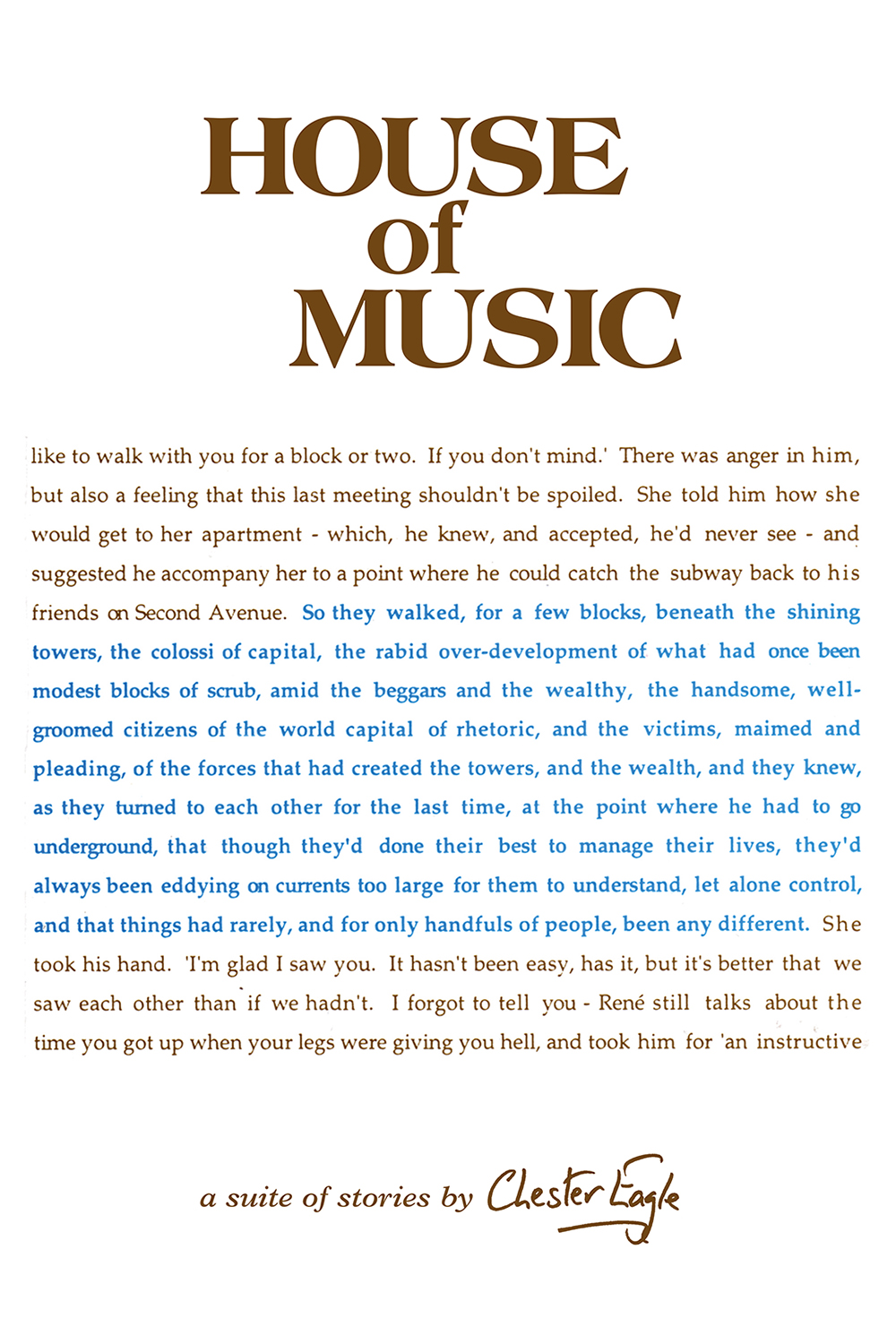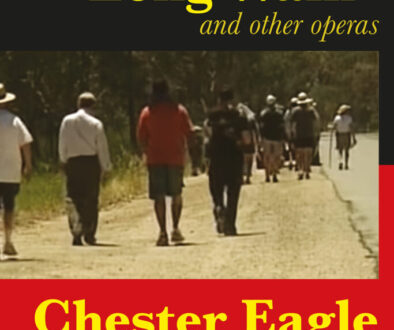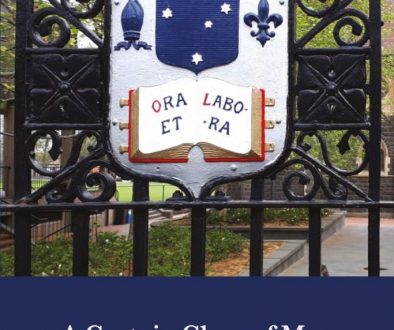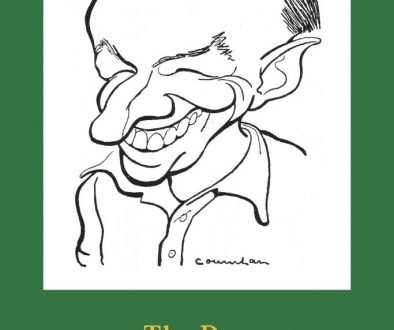House of music

The stories in this collection can be read separately, and in any order. If, however, you read in the conventional direction, you will find that the characters who are named in the first story – as opposed to the endless throng of drinkers, talkers and excitement-seekers who pass through the house of music – are picked up at least once in their later lives. Their fates and fortunes – like the events detailed in the stories – differ widely, and the reader may well ask what, if anything, bonds these people, these events, together. The collection, finally, leaves the question open, but the last story reaches a serenity, an acceptance, which is somehow the outcome of all the events, and all the lives, detailed herein.
Written by Chester Eagle
Cover by Vane Lindesay
Layout by Chris Giacomi
First published 1996 by Trojan Press
1,000 copies printed
Circa 54,200 words
Electronic publication by Trojan Press (2006)
The writing of this book:
This book was written after Wainwrights’ Mountain, but published before it. Thereby hangs a tale. I felt immensely proud of the novel, but its treatment by two of the country’s best known publishers had left me angry. I determined that if Wainwrights’ Mountain could be treated as it had been then I wanted no more to do with commercial publishers. It seemed to me also that the electronic revolution had changed the situation in which publishing had developed. Typesetters were no more, and printing on demand, as opposed to large and speculative print runs, had arrived with high quality photocopiers. People still said, ‘Distribution is the problem,’ but I felt it was a problem worth tackling. I determined that I would publish for myself and began to do so. Since Wainwrights’ Mountain meant so much to me I decided to do another book first, and the big novel second. Hence the reverse order of publishing these two books.
The completion of Wainwrights’ Mountain was a huge event in my life and I said to some of my friends that I doubted if I’d ever write anything again. Happily this turned out not to be so, and after a gap of a year or so I began a suite, as I called it, of stories. A suite: as the word implies, the stories follow each other. The first is certainly the first and the last is the last, with the other five stories sitting more or less evenly in between. Again I have to refer to Wainwrights’ Mountain; with this novel I achieved, at last, that summit for a writer, unity of vision. As the big novel reaches its end, the world is seen, at last, with a unifying vision. The novel, and its writer, have found the unity that Giles Wainwright had striven to achieve.
Quite a peak! The House of music stories were the first thing I wrote after the Wainwright novel and it seemed to me that I could take unity for granted, now that it had been achieved. I could offer the reader parts, discreet stories, hoping that they would sense their bonding. I like to believe that this is the case, though I must defer to what actual readers, as opposed to my notional ones, find when they read them.
I began with the ‘house of music’ which was based on the untidy home in East Melbourne where I had spent precious hours in the last three of my university years. It was the home of Vans Ovenden and of everyone who knew him. There were occasional quiet nights, and many other nights when the place was swarming with people. I don’t remember Vans ever turning anybody away. In the opening story I have ‘Vance’ die while still the occupant of the house. This wasn’t actually the case. The real Vans remarried and moved out, dying a few years later of a first and only heart attack. There was a farewell party but I had to come down to Melbourne for it because I was living in Gippsland by then. The farewell party was decorous enough but there had been more than enough wildness in earlier years. Vans loved music and I think his household did more than anything else to educate me in the holy art, as Schubert calls it in a song.
In planning the suite, I decided that everyone mentioned by name in the first story would reappear in one or more later stories. This was one way of establishing that unity referred to earlier. It had been achieved in Wainwrights’ Mountain and could now be taken for granted, but it should be there, I felt. Hence the shape of the last story, ‘Coming down’, which has an ending at the beginning and a new beginning at the end. Hence also most of the tricks of the other stories. ‘Angela’s child’ was based (very freely) on a tale I’d been told by an ex-student of many years before who’d looked for a while as if he might become a famous footballer. His sporting career didn’t take off but his story lingered long enough to be overtaken by the feminist thinking already referred to in these notes. ‘Those shining towers’ is also a very free rewriting of events in my own life, including a recent visit to New York. I felt a need to link the gothic cathedrals of France with the even more heaven-assaulting towers of the American city. Why? Because they were there, I suppose. Because both types of building gave this individual a feeling that he didn’t have much control over his destiny.
‘Who shall comfort ye?’ is based on a few scattered observations of people at Vans’ East Melbourne home, coupled with the quirks of what I shall call psychological medicine. Every generation invents new forms of it or reinvents old ones, and they’re never much use but as one generation moves away from nonsense another comes along, needing it. Who shall comfort anybody?
In ‘The eyes of the blind’ I linked a woman’s (Ellen’s) loss of her partner and also her loss of a binding thread in her life with something I’d observed a couple of years before during a visit to Lisbon. In the praca (square) outside my hotel I saw and heard a blind man listening to Tristan and Isolde. It seized my heart. I went straight to my room and wrote about it, knowing that the incident would surface in my writing one day. It controls every line of this story.
‘Three strikes’ is a piece of play based on a man who was a frequent caller at Vans’ East Melbourne home. He had a huge general knowledge and seemed to focus on what everyone was up to. Everyone was up to something, usually on the other side of that line drawn by law. When I visited the house of music I was a rather tight young man but something of this big Irishman took root in my mind; hence this quirky story.
‘Coming down’, as stated before, completes the suite. It also sums up (and tries to overcome) many years of listening to men talking as if they are ‘tougher’ than women. Men will say this despite the evidence of their own eyes! Toughness takes many forms, and it slides into determination, which in turn slides into many more qualities, such as the capacity to analyse situations in order to make them better. Strength is love and love is one of the greatest strengths. The character of Jocelyn is the strength of this last story and she demonstrates it in a world that’s more complex than the Broken Hill environment where she and her flying doctor have raised their son. He’s in trouble, Jocelyn finds a way to give him a new start, and in doing so she gives herself and her husband a new start too. This is a good place to end.
At the time I published this book I made valiant efforts to get it into bookshops in several of our capital cities, but few of these copies ever sold. It dawned on me that publishing could only prosper on the back of publicity that I had no way of generating and didn’t want anyway. I dropped back to modest print runs and giving books away. The internet hadn’t reached my consciousness at that stage so I fell back on word of mouth and simple generosity. I’d separated art from business but still hadn’t quite worked out how art could get by on its own.



